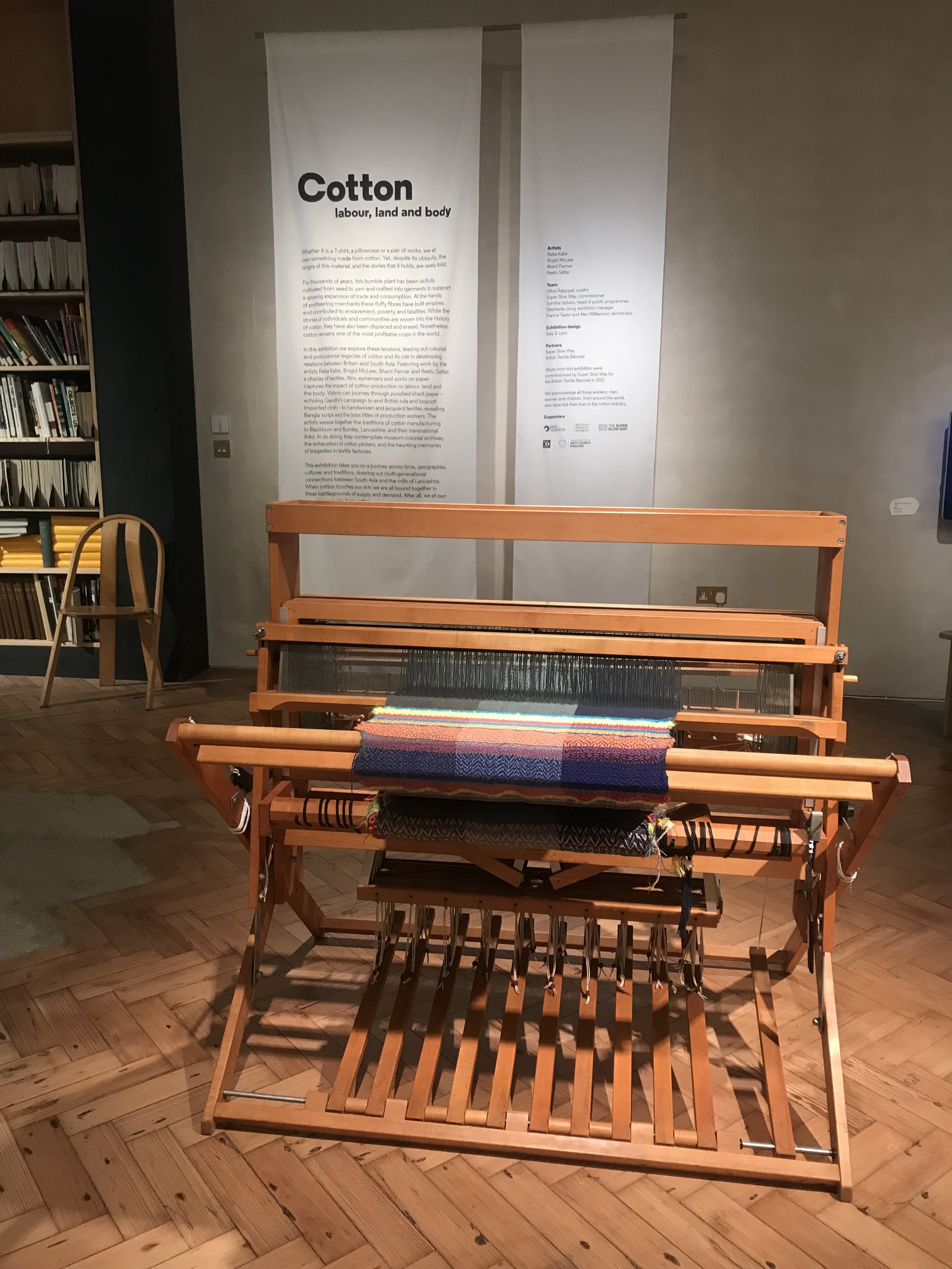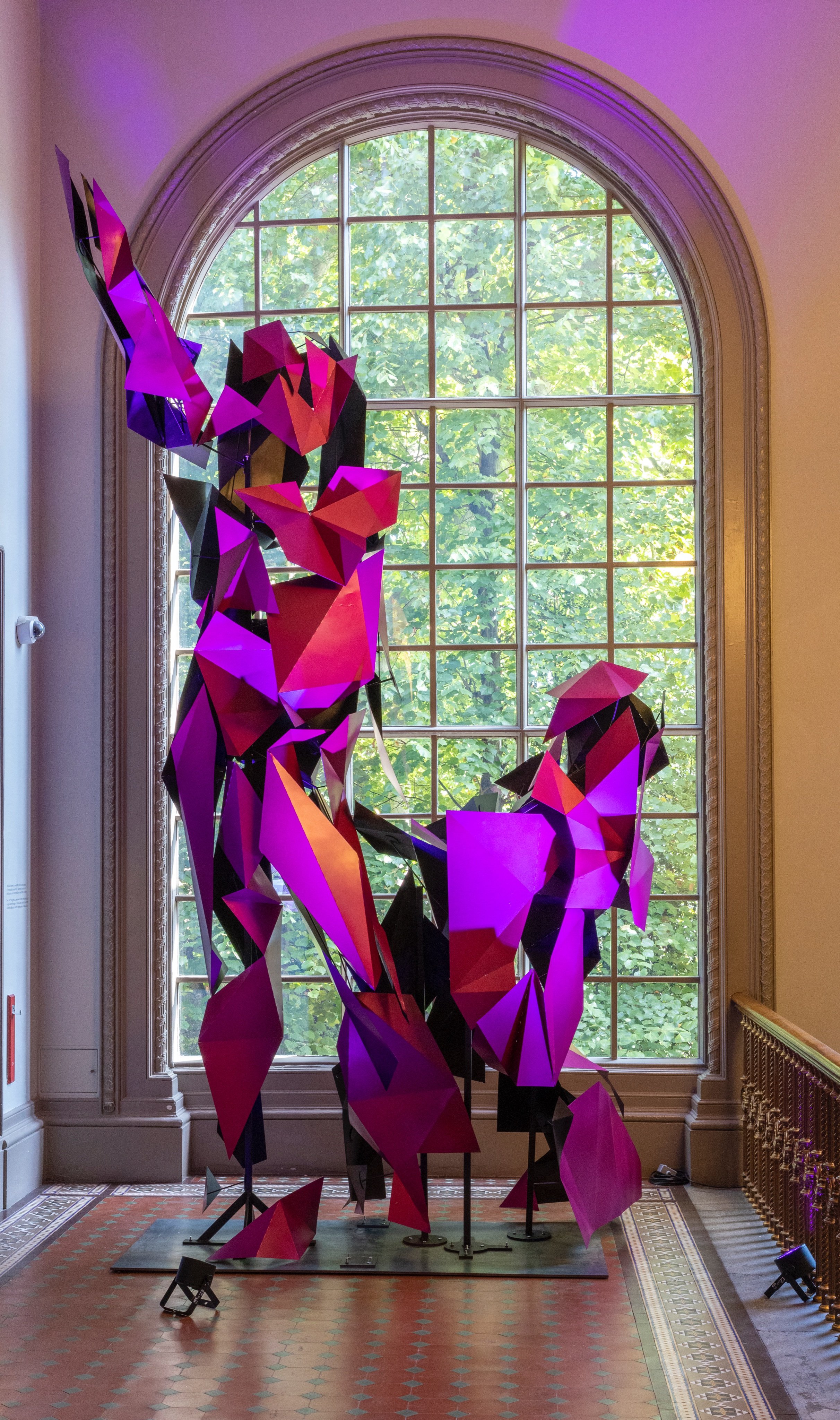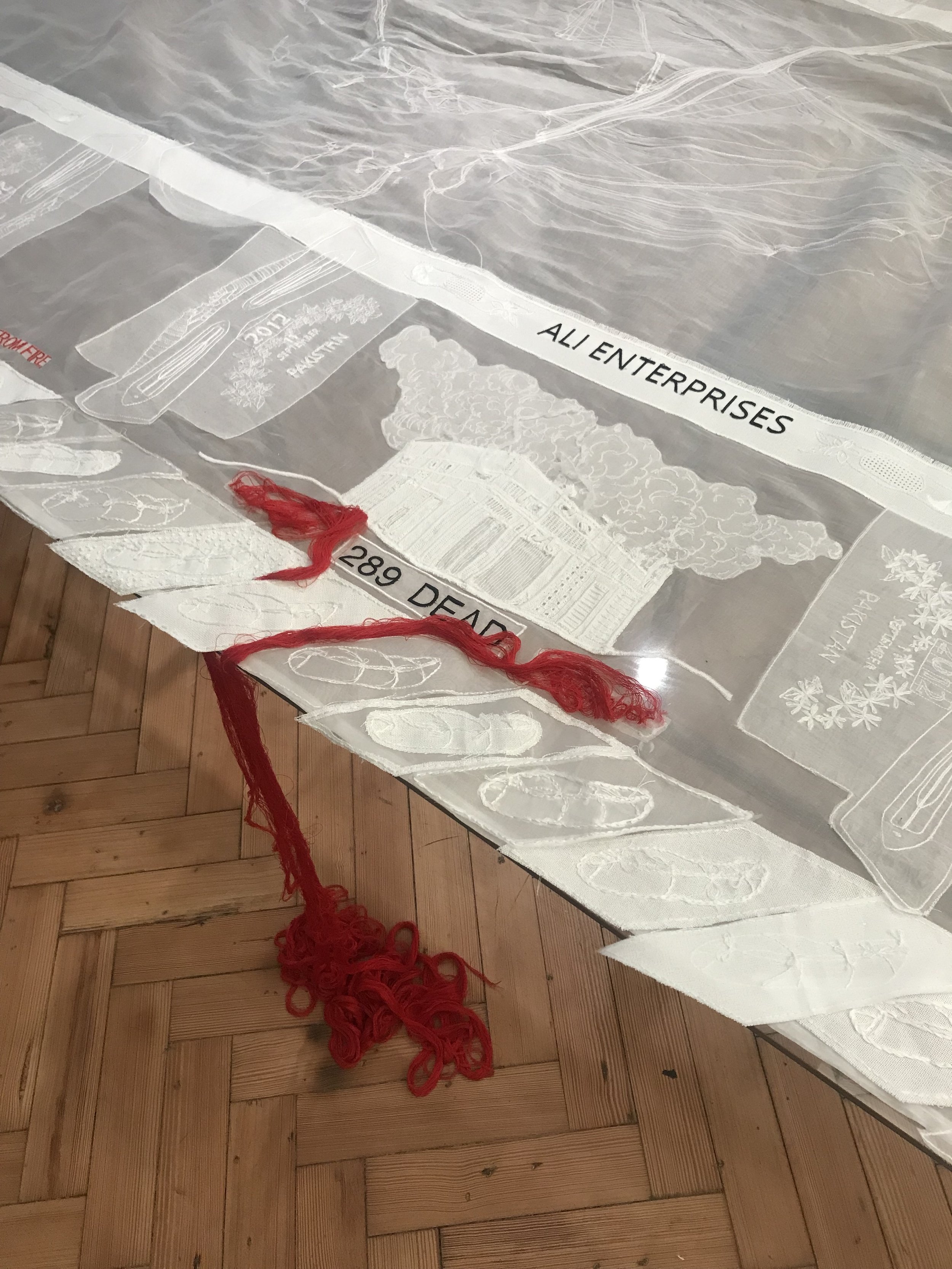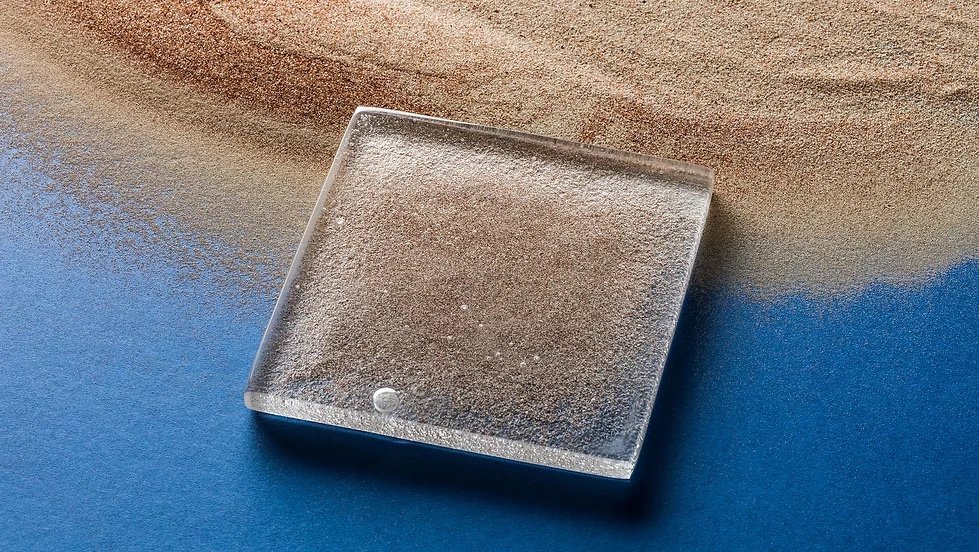LDF 2022 Diaries: Day Three
A loom displaying art by weaver Raisa Kabir at Cotton: labour land and body, (image: India Block).
There’s still time to catch these exhibitions during the final days of London Design Festival (LDF) 2022. Our final roundup of recommendations includes a spliced-up sculpture, a curation of everyday objects from all over the world, and a deep dive into the dark side of cotton.
(image: Brendan Cormier via Twitter).
Museological space
The question of who and what is represented within cultural spaces and platforms is evergreen, but it gains particular relevance during design festivals whose raison d’être is, at least in principle, the promotion of the disciple in which they operate. As such, it was a treat to see the V&A tackle the question head-on through Not David! by international architecture collective Xcessive Aesthetics, which creates aluminium sculptures through the scanned and glitched recomposition of their own bodies with digital space. The results are humorous and provocative, hitting the sweet spot of being both visually fascinating, but also able to raise compelling questions about who and what societies deem worthy of replication and veneration. It is a fascinating project and one that all involved deserve credit for – a site-specific installation that shows how design and culture can engage socially and politically, all while remaining aesthetically delicious.
Not David!: Room 108, V&A, SW7 2RL
Detail from Collateral by Brigid McLeer (image: India Block).
Cottoning on
Don’t be lulled into a place of calm by the clean white fabric banners that form the exhibition signage at Cotton: labour land and body – this is is an exhibition that will compel you and turn your stomach in equal measure. Curated by Uthra Rajgopal, Cotton brings together textile art and documentary films from Raisa Kabir, Brigid McLeer, Bharti Parmar and Reetu Sattar that draw lines from South Asia to England’s satanic mills. These “fluffy fibres” are soaked in the grimy legacy of colonialism, as Rajgopal demonstrates with these quietly devastating displays, which were originally part of the British Textile Biennial 2021. Every piece benefits from a close reading, so be sure to block off an hour to fully immerse yourself in the works on display. Parmar, a child of an Indian immigrant British mill worker, uses hole punches to punctuate cotton khadi paper. A delicate botanic cut-out is made terrible, however, by the caption informing the viewer that it is a diagram from a slave plantation for the best place to prune the plants for maximum yield. Collateral by McLeer haunts the whole room. An eerie soundtrack of singing and clog-dancing from folk duo Lunatraktors plays out over a filmy piece of white lace that had been spattered with gory red thread, spread out on a table like a blood-stained shroud, carefully embroidered with scenes of factory fires and collapses. Death tolls and extortions to keep away from fire are sewn in scarlet threads that spill over the table to pool on the floor next to a pile of snipped-off garment tags. Red thread appears again in the work of Kabir, who used it to stitch and overstitch the borders of India in a sampler illustrating garment worker migration routes. Across history and geography, cotton has left a bloody trail leading to the clothes on our backs. As Rajgopal says: “we all own something made from cotton.”
Cotton: labour land and body, Crafts Council Gallery, 44a Pentonville Rd, N1 9BY
(image: Studio Sahil).
Sand and glass
One of great pleasures of LDF, or any design week for that matter, is the role it can play in introducing less known or heralded designers to the wider audiences that their work merits. As such, Disegno was delighted this year to see Studio Sahil, the practice of designer Rezzan Hasoğlu, take upon a prominent position within the Shoreditch Design Triangle. A graduate of the RCA’s Design Products MA, Hasoğlu’s exhibition is titled Coastal Myths, and serves as a display of the glass, jewellery and accessories that she has created, which all share an interest in cultural heritage and craft technique. The hand-blown glass works, in particular, stand out, with Hasoğlu infusing her creations with sand collected from different locations – a beautiful form of decoration, but which also lend each piece a sense of providence and a reflection on the materiality of the material within which Hasoğlu works (the studio’s “sand library” is particularly excellent). It is a compelling display, from a designer whom Disegno looks forward to seeing more from in the years to come
Coastal Myths: 16 Calvert Ave, E2 7JJ
Jill Tsai’s homebrew museum translates the joy of travel (image: India Block).
Eat, pray, curate
The joy of travel and human connection suffuses Translations of everyday objects with Travel Things Museum, an interactive museum of treasures collected by artist Jill Tsai on her travels. Tsai has a collector’s eye for the quirky and a curator’s skill for presenting items from wildly different cultures in interesting dialogue with each other. Tsai is particularly drawn to natural materials and domestic objects, and presented altogether they tell their own stories and create new ones together. No matter how disparate two cultures may be, they will always have a broom for sweeping, a sack for grains, or a jar for mayonnaise. Matchboxes, beeswax effigies, fans, sugar packets and bottles of olive oil are displayed with the solemnity of relics, although visitors are very much encouraged to touch and play. Each item in the collection is a serendipitous discovery and Tsai is insistent that she collects for pleasure, not for work. But she is serious about her archive: each piece is documented by geographic region, dimension and colour, then carefully stored in her studio. For each trip she creates a hand-illustrated list of items to pack to help her whittle her backpack down to the essentials. The hardest part is the import paperwork; a suggestive coco de mer seed from the Seychelles was caught up in customs for weeks. Her secret to bringing back so many items? She brings home comforts in the form of favourite foods to consume along the way. Once the snacks are snacked, there’s more room to pack. Translations has been the word-of-mouth hit of LDF, so be sure to drop by to handle the objects yourself and gain inspiration for your next trip.
Translations of everyday objects with Travel Things Museum, Islington Square G6A unit (near Esther Anne Pl), 116 Upper Street, N1 1AB
The Iso-lounge chair, photographed in VG&P and Isokon Plus’s factory (photo: Nicola Tree).
Wood you like to visit
Ok, so we are is cheating slightly as this one-day-only event is happening 24 September, and Disegno has not invented time travel (yet). But we can be pretty sure that this tour of Isokon Workshop will be fascinating – after all, we published a deep dive into the history of the furniture makers in Disegno #30. This open day is a chance to see the place where numerous classic designs are brought to life, such as Marcel Breuer’s Long Chair and the adorable Penguin Donkey by Egon Riss. Isokon also produces a wealth of strong contemporary designs, including Jasper Morrison’s Iso-lounge, a technically accomplished cantilevered plywood chair that was our cover star for #30. Yes, we’re biased, but don’t let that dissuade you from securing your free tour ticket post haste.
Isokon Workshop, Isokon Plus, Unit 2B (rear section), Uplands B Business Park, Blackhorse Lane, E175QJ






